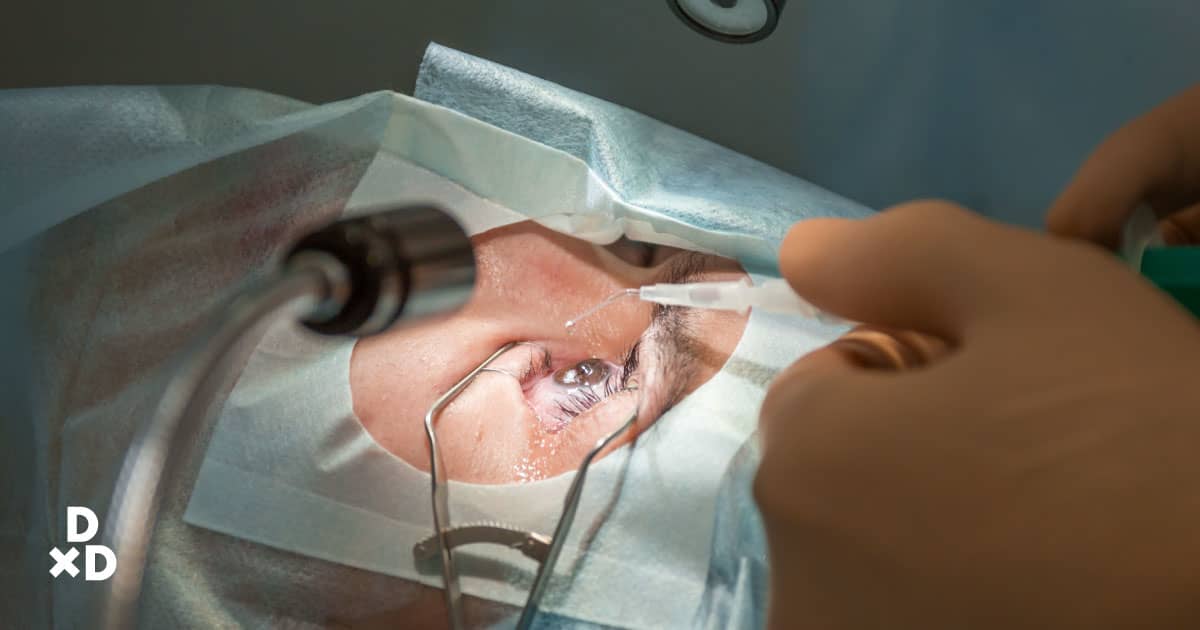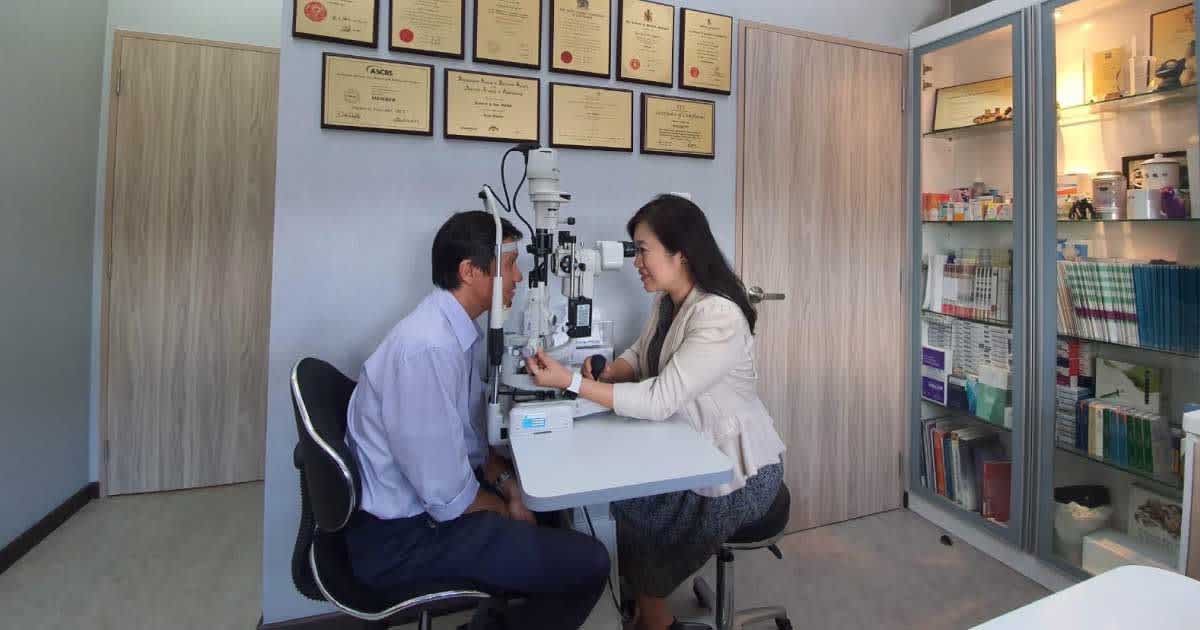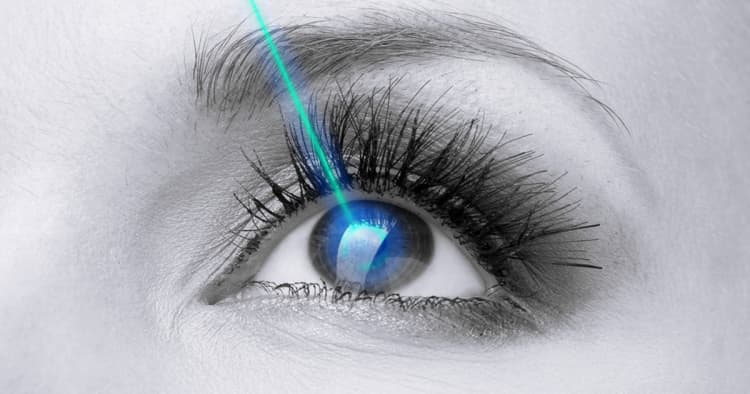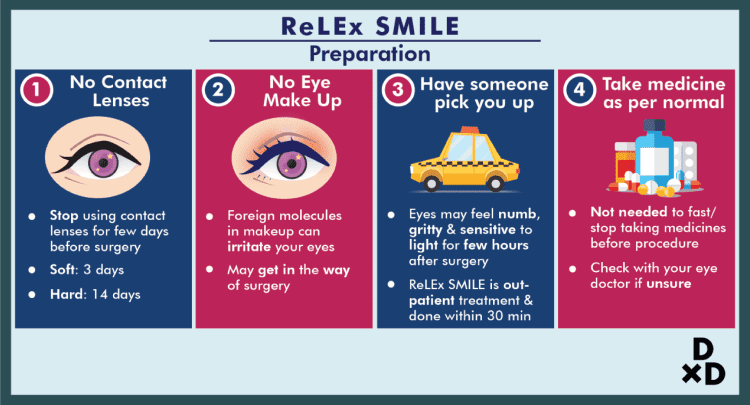Want to know how to get 20/20 vision through minimally invasive refractive procedures? Check out our webinar as we explore two minimally invasive refractive procedures, TransPRK and SMILE, and how it can help you achieve the perfect vision you desire.
Title: Beyond LASIK: Minimally-Invasive Laser Vision Correction Techniques
Date: 24 Feb 2021
Time: 7pm
Register Here: http://bit.ly/2LwQu9o
Ever heard of 20/20 vision? It is a measurement of visual acuity and it essentially means that you are able to see things clearly at 20 feet (6 metres)- this is what a normal human eye usually sees.
In this comprehensive article, I share what you can expect with wavefront-guided LASIK and LASIK Xtra, including trends, results, costs, and exciting new advances with the latest iDesign 2.0 wavefront-guided LASIK platform. In my opinion, this iDesign 2.0 will be of great benefit to patients looking to correct their vision.
Back to the original question, do your eyes have an acuity or sharpness of at least 20/20? Chances are that you do not. According to statistics, the prevalence of myopia in Singapore is among the highest in the world, with 83% of young adults suffering from myopia, or short-sightedness [1].
At some point in time, you may have grown tired of wearing your spectacles or dread the laborious ritual of donning your contact lenses. You relish the thought of the past when you could read bus numbers or shop signs using only your naked eyes.
Thankfully there are solutions to all of this. You most probably already know one of it, and perhaps even thought about doing it. Surprise, it’s LASIK (Laser In Situ Keratomileusis) surgery.
Different types of LASIK
Conventional LASIK is a form of refractive surgery that treats the cornea to correct flawed vision conditions like:
- Myopia: Short-sightedness
- Hyperopia: Far-sightedness
- Astigmatism: Blurry vision
It works by creating a flap in the cornea, which is the transparent surface forming the front of the eye. A laser is used to reshape the cornea, eliminating refraction or focusing problems in the eye. However, compared to the latest augmented LASIK procedures that we will explore later on, conventional LASIK may not be as effective in certain situations.
What is Wavefront-Guided LASIK?
Wavefront-guided LASIK is a more customised and individualised form of LASIK than conventional LASIK. Wavefront Guided technology is used to carry out LASIK in a way that is adapted to the distinct eyes of different patients.
This is done through a special eye-scanner that forms a 3-D image of the eye. It is also sometimes called the iLASIK (the version in my clinic) or “High Definition” LASIK in lay person’s words.
The technology is able to detect all the tiny and less obvious errors that may exist on the surface of the eye and within, and adjust the correction mechanism accordingly. As I like to tell my patients, Wavefront-guided LASIK is a little bit like having a dress or shirt tailor-made for you.
Conventional LASIK and Wavefront Optimised LASIK are usually unable to completely treat these higher-order aberrations that Wavefront-guided LASIK can. Though Wavefront Optimised LASIK is slightly more adjusted than standard LASIK, Wavefront-guided LASIK is still the most detailed and specialised procedure.
In fact, Wavefront-guided LASIK was the first LASIK procedure to be approved by NASA and US Navy for astronauts and naval pilots respectively back in 2007, based on their effectiveness including its potential for improvement of night-time visual quality.
It is interesting to note that besides LASIK, Wavefront-guided technology can also be used in vision correction procedures like surface ablation techniques, such as:
- Wavefront Guided LASEK
- Wavefront Guided PRK
- Wavefront Guided Trans-PRK
What is LASIK Xtra?
LASIK Xtra is a supplementary treatment that can be added on to either LASIK procedures or surface ablation treatments. It involves improving the tensile strength of the cornea after LASIK procedures.
Our cornea is the target of treatment for LASIK or surface ablation procedures. It involves a laser manipulation of the cornea shape, which tends to thin down the cornea slightly. This can mean that the cornea has lost a bit of its original rigidity.
LASIK Xtra uses a cross-linking treatment to improve the tensile strength and mechanical properties of the cornea to compensate for the initial loss caused by the vision correction procedures.
How much do these LASIK procedures cost?
Standard LASIK procedure
Less than $4,000 for both eyes, including GST
LASIK Xtra
Wavefront-guided LASIK
10-20% more than the standard LASIK procedure ($400-$800 more)
Refractive Surgery Procedures:
PRK
EpiLasik
TransPRK
$3,800-$5,000
Flapless laser vision correction:
ReLEx SMILE
$5,000-$6,000
[5]
Currently, due to the COVID-19 situation, there are quite a few “pandemic” promotions taking place. Doctors are aware of the financial situation where income levels have decreased across the board. For example, at my clinic, we understand the difficulty of current times and have adapted our fees to remain attractive.
Read more: LASIK Costs In Singapore: An Eye Doctor Tells All (2020)
What are the main differences between the LASIK procedures?
Conventional LASIK involves the main procedure of creating a flap and using a laser to reshape the cornea.
Wavefront-guided LASIK further improves the corrections for the finer errors of the eye.
LASIK Xtra includes a process to increase the strength of the cornea after the main treatment (LASIK procedures or surface ablation procedures).
What results can you expect from LASIK and how long does it last?
For the most part, LASIK is a permanent treatment. Once the cornea shape is altered, it remains as that shape indefinitely. You would be able to have improved vision that could in some cases exceed 20/20 and last for a very long time.
A study conducted in 2016 reported 99% of patients actually achieve better than 20/40 vision and more than 90% achieve 20/20 vision or better [2].
Though LASIK treatment is carried out on the cornea, the rest of the eye is not protected from the tides of time. The eye is a human organ and will continue to age. The person may also develop other problems such as cataracts in the future, depending on their age.
Your eye power may slowly deteriorate, perhaps due to the advancement of presbyopia and cataract formations. The National University Hospital in Singapore reports that 78.6% of the elderly in Singapore are affected by cataracts [3].
Nowadays, you can expect very good results with the prominence of modern machinery and technology. I would say that you can expect up to more than a 96% satisfaction rate and a success rate that is practically close to 98%.
In general, LASIK provides very good results and there are only a few rare cases that have very serious issues.
What are the market trends for Wavefront-Guided LASIK and LASIK Xtra in Singapore like right now?
Let us look at some of the current LASIK trends and statistics in the eye health category within Singapore. Perhaps, it can inform you more on your decision to undergo a LASIK operation.
LASIK Xtra
LASIK Xtra is certainly on the rise. A growing proportion of people going for LASIK end up supplementing the LASIK Xtra procedure due to the greater prominence of its technology and acceptance into mainstream treatment.
We generally offer LASIK Xtra to every patient who seeks LASIK treatment in our clinic. In fact, we offer LASIK Xtra particularly to younger patients in their early 20s or patients with very high optical power.
LASIK Xtra is especially suitable for these patients to stabilise the cornea and prevent any possible mild regression of the eye power. Therefore, it reduces the risk of having to go for an additional enhancement treatment after.
Wavefront-Guided LASIK
Wavefront-guided LASIK has been around for many years now. In my experience, the technology for the procedure may have become more refined but it still remains complicated for doctors operating the machine. This is partly due to the fact that there are different laser machines offering various versions of the Wavefront-Guided LASIK, making it confusing for everyone.
Because of this, you’d find that not many practitioners actually offer Wavefront Guided LASIK as a first-line treatment.
Something new and noteworthy though: my clinic also possesses the updated version of the Wavefront-guided iLASIK scanning machine called the iDesign 2.0. It was produced recently and only introduced into Singapore within the past year. This most advanced iteration of the iDesign for Wavefront-guided LASIK boasts a more sophisticated measuring device. Calculating dimensions have become more accurate and robust, incorporating both the measurements of the whole eye and the cornea into one data set.
The technology has become more user-friendly for doctors to administer, hence making the pre-operative examination process more streamlined for patients as well. It has also been proven to be able to treat a wider range of eye powers. We are committed to administering Wavefront-guided LASIK treatment with the iDesign 2.0, as there is a trend showing that Wavefront-Guided treatments enable us to help more patients achieve better vision quality. Needless to say, patient’s eye assessments will still need to qualify for it, as Wavefront-Guided treatments generally do take up more corneal thickness.
How common are unsuccessful LASIK procedures?
Failure is very uncommon nowadays, especially with the latest technology and apparatus such as the femtosecond laser flap creation process and the modern excimer sculpting laser. The combination of the two apparatus ensures an extremely effective and safe LASIK procedure.
In the old days, when doctors were still administering the bladed version of LASIK, the complication rate was slightly higher. Currently, with advanced technologies, the success rate is generally more than 90-99%.
Patient experience
Let me bring you through what my patients usually go through during the entire LASIK journey.
What tests do I have to undergo before LASIK to assess my suitability?
To assess your suitability for LASIK, you need to undergo thorough tests to observe your cornea dimensions and obtain relevant measurements. This includes a few tests for the measurement of eye power, with and without eye drops that relax the focusing muscles.
We also evaluate the structure of the back of the eye, alongside a pre-operative test for ectasia (when the cornea may be too “weak” or “soft” for LASIK). Ectasia is more prominent in certain geographical areas in the world and hence racial background and related details may be taken into account.
Altogether, the tests usually take at least 2 hours.
Prior to the tests, you need to stop using contact lenses for at least 2 days. If you have to wear contact lenses, you should only be using soft ones. Patients who wear spectacles can continue to use them like normal.
You may also be advised to stop using creams, lotions, makeup, and perfumes on the day of their LASIK surgery as they may increase the risk of infection and affect the lasers [4].
Your doctor should only proceed with your LASIK procedure only if the test results indicate that your cornea is suitable. Hence, it is important to undergo all these tests properly.
What are some potential side effects and risks of LASIK?
Side effects of LASIK include:
- a limited period of dry eyes
- slight glare
- halo effects
These side effects can last for a couple of weeks after your LASIK surgery.
As with any other medical operation on our body, the risks include possible infection and inflammation. At times, eye pressure problems can arise especially if some post-operative eye drops are used for a long period.
The corneal flap made by LASIK can be a potential cause for concern too. For instance, people who are involved in contact sports may have a higher risk of the flap being traumatised or dislodged after surgery. However, depending on the type of sport, your doctor should have advised you to take extra precautions and abstain from participating in such activities.
How long does a LASIK surgery take?

In general, a LASIK procedure takes less than half an hour for both eyes. The lasering part of the procedure generally takes less than 1 minute for each eye. Most of the time spent in the entire LASIK process is for preparation and ensuring that the patient is comfortable.
What should I expect during the surgery?
By and large, you will be lying flat and comfortable.
The only uncomfortable part would be the stretching of the eyelids for the actual LASIK procedure.
We have to stretch the eyelids due to the natural reaction of our body to shut our eyes when the doctor maneuvers close to the eye. When the laser passes, you may experience some pressure on the eye and find that your eyesight becomes a little darker and blurrier. However, that is very normal.
So to sum up, really the only points of discomfort would be the stretching of your eyelid and the slight pressure when the laser is being used.
What does the post-LASIK recovery process look like?
For the first couple of hours post-operation, you may experience a couple of sensations in your eyes, especially after the effects of the anaesthetic eye drops wear off.
These sensations include:
- itchiness
- tearing up
- foreign body sensation
- in some cases mild pain, in which the doctor would prescribe a mild pain reliever [5]
Patients I’ve seen tell me that the discomfort after LASIK surgery is short-lived. This is unlike TransPRK and other surface ablation treatments like LASEK which may cause more discomfort for up to two days. Overall, LASIK is the most comfortable procedure out of all the excimer laser treatments.
Usually, the patient’s eyesight may recover very quickly after LASIK.
I had a patient who was originally at about 1000 degrees shortsighted. Right after the LASIK procedure, as he stood up from the operating table and walked to the examination room for a final check-up, he could already see a lot more clearly than before the operation. This patient was visibly delighted!
However, it is still advisable for patients to have someone to accompany them home. You are only allowed to go home alone if you undergo the operation for only one eye.
Though some can expect results almost immediately, depending on the patient, the full recovery periods for all these laser treatments could take at least one week.
It is possible that there might be mild fluctuations in vision within the first few weeks after LASIK surgery. Hence, when possible side effects have subsided, the one-month mark is the point most doctors define as the “stable outcome” after LASIK surgery while the three-month mark is the final outcome.
Follow-up appointments
Your doctor would usually seek a few follow-up appointments with you to ensure that everything is on track. These appointments take place within a few days after the operation, at the one month mark, and finally at the three-month mark.
Can I work or exercise post-LASIK surgery?
While recovering from a LASIK procedure, you can work and exercise IF and ONLY the environment is clean. It is important to note that within the first few days post-operation, there will be several types of eye drops that you would need to apply. Hence, I normally advise that you always have access to hand washing. Contact sports and swimming should not be attempted for at least a month.
In general, my patients ask for about 2 to 4 days of medical leave after the LASIK surgery. For operations occurring over the weekend, most patients would only require very few days of absence from work.
What kind of medication do I have to take?
You will receive different prescriptions for different types of eye drops such as antibiotic eye drops and steroid eye drops. These eye drops have to be applied according to the stipulated treatment regime.
Since patients may experience a period of dryness in their eyes, the most important medication would be the moisturising eye drops which have to be used regularly after the initial post-operative period.
Generally, doctors may prescribe you some oral medication such as Panadol tablets. For if you feel patients who are anxious, not to worry, the doctor may prescribe mild sleeping tablets. You may have to wear some form of eye protection post-surgery which may make it harder to sleep.
How likely is it that I would have to come back for retreatment?
It is very rare nowadays, especially with more sophisticated treatment procedures like LASIK Xtra and Wavefront-guided LASIK.
However, we usually quote a 1% chance of retreatment should there be any unexpected need for over or under-correction.
Learn more about Dr Daphne Han’s practice and how it stands out

I have been an eye doctor for 20 years, and I’m currently working at Singapore Medical Specialists Centre. My expertise lies in using all the vision-correcting technologies such as LASIK, SMILE, surface ablation as well as ICL.
My core beliefs and working style are patient-centric, and you’ll find my key priority as a doctor is to consider the suitability of your lifestyle as well as the suitability of your eyes for the proposed treatment.
I fully encourage all patients who are seeking any vision correction procedures to keep an open mind regarding their treatment options and weigh the pros and cons of the various choices wisely before deciding.
While I’ve seen fantastic results with all the technology at hand, I do not deliberately favour one treatment over another just because the clinic only has equipment for that treatment.
The iDesign itself has already previously been shown to allow a higher number of people to achieve better vision than 20/20 compared to non-wavefront-guided systems [6]. My clinic’s Wavefront-guided technology, the Star S4 iDesign 2.0 Refractive Studio, is the iDesign’s latest edition, being FDA-approved and launched in 2018. It is the only system to use topography-integrated, wavefront-guided technology, making its measurements and treatments even more precise than the previous version of iDesign [7].
American doctors had first access to iDesign 2.0 before the rest of the world, and their experience has been excellent. It is approved for myopia, hyperopia and astigmatism. Furthermore, it is the only FDA-approved platform for monovision LASIK in presbyopic myopic patients.
There is a big improvement in operator-friendliness for the doctors, which the previous model was lacking. The 2.0 version has streamlined and integrated all the important features of the older version of the iDesign scanner and is able to scan in just 3 seconds. Current experience shows that it is particularly useful for treatment of astigmatism as well as LASIK correction for post-cataract surgery errors [8].
In my clinic, we have had successes in iDesign 2.0 in LASIK treatment for virgin eyes as well as for enhancements after previous eye surgeries, allowing our patients a chance to achieve their goals for excellent vision, to improve their performance in sports, career and lifestyle.
You can click here to book an appointment with Dr Daphne Han.










